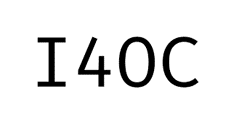Adult attachment style and therapeutic alliance in men who assault their partners
Keywords:
therapeutic alliance, adult attachment, intimate partner violence, batterers’ treatment, partner violence perpetratorsAbstract
In order to develop strategies to facilitate the establishment of a positive therapeutic alliance, which is considered the main predictor of therapeutic success in the intervention with men who use violence against their partners (partner violence perpetrators), this study aims to analyze whether there is a significant relationship between adult attachment styles and the establishment of a positive therapeutic alliance in the psychotherapeutic intervention with partner violence perpetrators. The results confirm the existence of this relationship; also, it is found that the Hostile Fearful attachment style presents problems to establish a positive therapeutic alliance. Given these findings the authors discuss the importance that therapists consider the adult attachment style of these men in order to foster therapeutic alliance; also, additional implications are analyzed for future research to improve clinical practice.
References
Álvarez, L. y Rodríguez, A. (2004). La investigación es salud sexual y reproductiva. Propuestas metodológicas y experiencias. La Habana: Publicaciones Azucareras.
Andrade, N. (2005). La alianza terapéutica. Clínica y Salud, 16, 9-29.
Babcock, J., Green, C. y Robie, C. (2004). Does batterers’ treatment work? A meta-analytic review of domestic violence treatment. Clinical Psychology Review, 23, 1023-1053.
Bartholomew, K. y Horowitz, L. M. (1991). Attachment styles among young adults: a test of a four category model. Journal of Personality and Social Psychology, 61, 226-244.
Batres, G. (1999). El lado oculto de la masculinidad. San José: Ilanud.
Bernecker, S., Levy, K. y Ellison, W. (2014). A meta-analysis of the relation between patient adult attachment style and the working alliance. Psychotherapy Research, 24, 12-24.
Bonino, L. (2008). Hombres y violencia de género. Más allá de los maltratadores y de los factores de riesgo. Madrid: Ministerio de Trabajo e Integración.
Brown, P. y O’Leary, K. (2000). Therapeutic alliance: Predicting continuance and success in group treatment for spouse abuse. Journal of Consulting and Clinical Psychology, 68, 340-345.
Corbella, S. y Botella, L. (2003). La alianza terapéutica: historia, investigación y evaluación. Anales de Psicología, 19, 205-221.
Diener M. y Monroe, J. (2011). The Relationship between adult attachment style and therapeutic alliance in individual psychotherapy: a meta- analytic review. Psychotherapy, 48, 237-248.
Dutton, D. (1997). El golpeador. Buenos Aires:Paidós.
Dutton, D., Bodnarchuk, M., Kropp, R., Hart, S., y Ogloff, J. (1997). Wife assault treatment and criminal recidivism: an 11-year follow-up. International Journal of Offender Therapy and Comparative Criminology, 41, 9-23.
Echeburúa, E. (1998). Manual de violencia familiar. Madrid: Siglo XXI.
Fuller, N. (1997). Identidades Masculinas. Varones de la clase media en el Perú. Lima: Fondo Editorial PUCP.
Gondolf, E. (2002). Limitation of experimental evaluations of batterer programs. Trauma, Violence and Abuse, 2, 79-88.
Horvath, A. y Greenberg, L. (1994). The working alliance: theory, research, and practice. New York: Wiley.
Horvath, A. y Luborsky, L. (1993). The role of the therapeutic alliance in psychotherapy. Journal of Consulting and Clinical Psychology, 4, 561-573.
INEI. (2015). Encuesta Demográfica de Salud Familiar (Endes) 2014. Lima: Autor.
Kietaibl, C. (2012). A review of attachment and its relationship to the working alliance. Canadian Journal of Counselling and Psychotherapy, 46, 122-140.
Lila, M., García, A., y Lorenzo, M. (2010). Manual de intervención con maltratadores. Valencia: Universidad de Valencia.
Loinaz, I. y Echeburúa, E. (2012). Apego adulto en agresores de pareja. Acción Psicológica, 9, 33-46.
Loinaz, I., Echeburúa, E. y Ullate, M. (2012). Estilo de apego, empatía y autoestima en agresores de pareja. Terapia Psicológica, 30, 61-70.
Martin, D., Garske, J. y Davis, M. (2000). Relation of the therapeutic alliance with outcome and other variables: a metaanalytic review. Journal of Consulting and Clinical Psychology, 68, 438-450.
Melero, R. y Cantero, J. (2008). Los estilos afectivos en la población española: un cuestionario de evaluación del apego adulto. Clínica y Salud, 9, 83-100.
Mikulincer, M. y Shaver, P. (2007). Attachment in adulthood: structure, dynamics, and change. New York: The Guilford Press.
Murphy, C., y Baxter, V. A. (1997). Motivating batterers to change in the treatment context. Journal of Interpersonal Violence, 12, 607-619.
ONU. (1993). Declaración sobre la eliminación de la violencia contra la mujer. Washington D. C.: Autor.
Ramos, M. (2012). Manual de capacitación a líderes locales en masculinidades y prevención de la violencia basada en género. Lima: UNFPA.
Rosenberg, M. (2003). Voices from the group: domestic violence offenders’ experience of intervention. Journal of Aggression, Maltreatment y Trauma, 7, 305-317.
Santibáñez, P. (2003). La alianza terapéutica en psicoterapia: El inventario de alianza de trabajo en Chile. Psykhe, 12, 109-118.
Sonkin, D., y Dutton, D. (2003). Treating assaultive men from an attachment perspective. Journal of aggression, maltreatment and trauma, 7,105-133.
Taft, C. y Murphy, C. (2007). The working alliance in intervention for partner violence perpetrators: recent research and theory. Journal of Family Violence, 22, 11-18.
Watson, J. y Geller, S. (2005). The relation among the relationship conditions, working alliance, and outcome in both process/experiential and cognitive/behavioral psychotherapy. Psychotherapy Research, 15.
Downloads
Published
How to Cite
Issue
Section
License
Copyright (c) 2016 PsiqueMag

This work is licensed under a Creative Commons Attribution-NonCommercial-NoDerivatives 4.0 International License.
You are free to:
- Share — copy and redistribute the material in any medium or format
- The licensor cannot revoke these freedoms as long as you follow the license terms.
Under the following terms:
-
Attribution — You must give appropriate credit, provide a link to the license, and indicate if changes were made. You may do so in any reasonable manner, but not in any way that suggests the licensor endorses you or your use.












